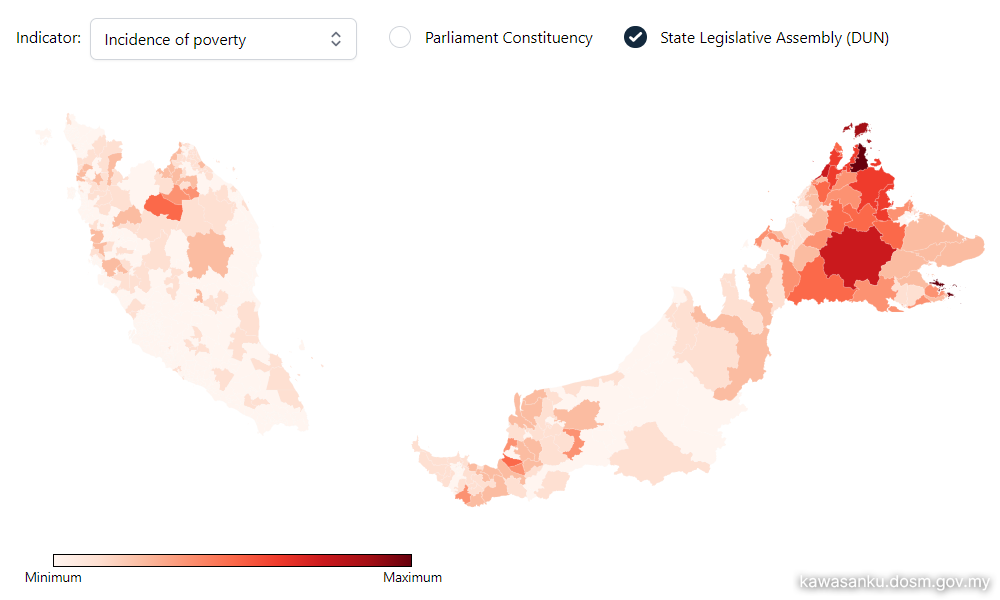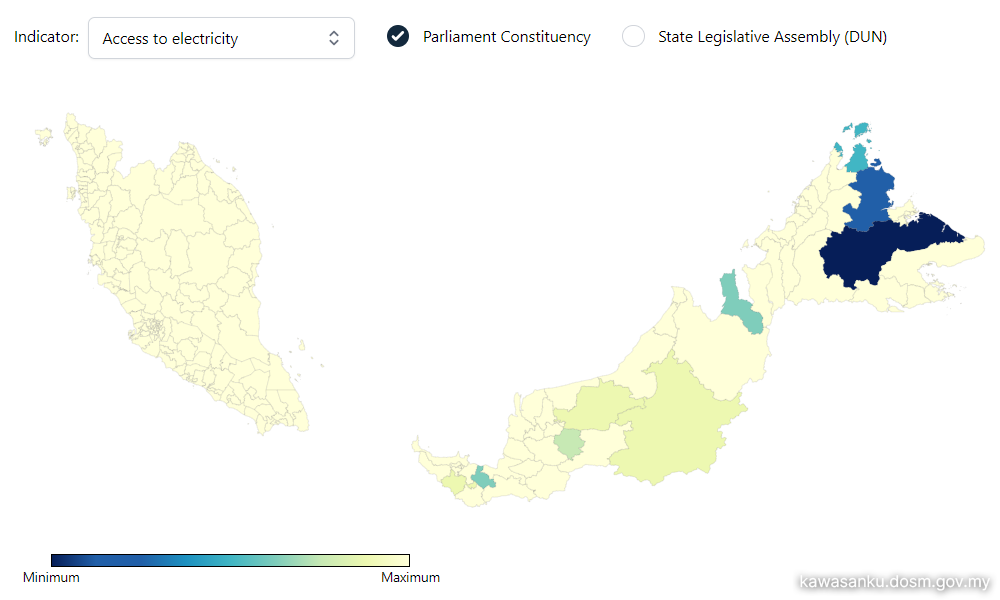Poverty can be found in every state in Malaysia. So, at times, it can be difficult to imagine how much more impoverished some areas can be based on statistical numbers alone.
For example, it was widely reported that Sabah is the poorest state in Malaysia, with a poverty rate of 19.5 percent in 2019, compared to 0.2 percent in Kuala Lumpur.
While the percentages seem stark, a geographic visualisation by the Statistics Department (DOSM) on its newly launched open data portal, Kawasanku, drives the point home.
Based on data from the 2020 census - which factored in poverty rates from 2019 - a heatmap of poverty in Malaysia shows just how bad it was in Sabah in 2019 compared to the rest of the country.
The heatmap shows that poverty was especially high in the parliamentary constituencies of Beluran, Kota Marudu and Kudat, as well as in Kinabatangan, Semporna, Kota Belud and Pensiangan.
Switching to the state constituency map on Kawasanku allows users to narrow down areas with high levels of poverty even further - with Bengkoka being the darkest on the heatmap.

A check on DOSM's subnational statistics for Bengkoka had a poverty incidence of 75 percent in 2019. Kudat as a whole has a poverty incidence of 47 percent.
It should be noted that DOSM's latest poverty data as of 2020 is much higher than the census data visualised by Kawasanku.

Poverty rates in Sabah in 2020 rose to 25.3 percent.
Kelantan’s poverty rate shoots up
Meanwhile, the country's second poorest state, Kelantan, had its poverty rate shoot up from 12.4 percent to 21.2 percent.
This means that if visualised, an updated poverty heat map would likely show more "hot" constituencies in Kelantan, in closer relation to Sabah.
Besides incidences of poverty, Kawasanku is also able to give geographical visualisation for data such as access to piped water at homes, as well as electricity - both of which appear to be severely lacking in Sabah.

Kawasanku also allows the public to see how the constituency they live in measures up on various matters such as poverty, the number of clinics and schools and even unemployment rates.
The portal enables users to easily make comparisons between their area and other areas.

The DOSM is hopeful that the data that can be accessed on Kawasanku can be put to practical use.
One example cited by chief statistician Mohd Uzir Mahidin yesterday is how it can help prevent wastage during donation drives.
“Data released by DOSM through the Kawasanku platform is not only important to the government but also helps non-governmental organisations or the private sector in their voluntary work or donation drives.
“This is because they can know, in detail, the population statistics in a state such as a gender, age and ethnicity breakdown within the parliamentary or state constituencies,” Mohd Uzir said. - Mkini




No comments:
Post a Comment
Note: Only a member of this blog may post a comment.